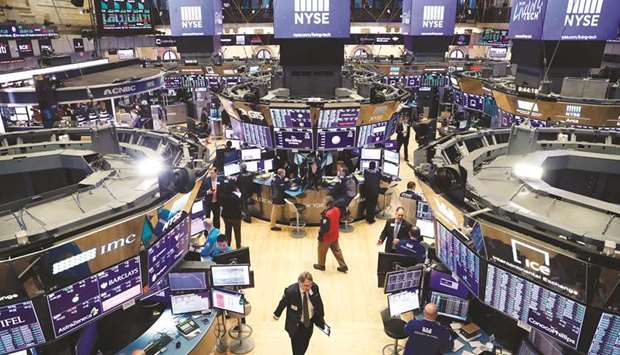Signs of trepidation over the lasting impact of the US coronavirus pandemic are growing on Wall Street, fanned by resurgent case numbers, the prospect of a slower rebound in growth and rising political uncertainty.
As a US equity rally stalled this week, investors poured a net $24.5bn into bonds, the third largest weekly inflows ever recorded, while pulling $3.8bn out of stocks, according to BoFA Global Research. Gold drew its second largest inflows on record, while investors socked nearly $41bn away in cash.
Meanwhile, the dollar hit its lowest level in nearly two years, weighed down in part by growth-chasing investors cutting positions in US assets in favour of allocations to Europe. In the bond market, yields on Treasury Inflation-Protected Securities (TIPS), which adjust for inflation – are near all-time lows.
“We are definitely concerned,” said Nick Maroutsos, Head of Global Bonds at Janus Henderson Investors. “I don’t think you can blindly buy assets. A lot of the value has been squeezed.”
Maroutsos said there was some “fear of missing out” in the market with the expectation that actions by the US Federal Reserve can continue to keep risk assets elevated, and that investors were “looking to hedge some of their portfolio given the move in risk assets”.
He added that behaviour “can certainly continue.”
The US central bank has pledged unlimited financial asset purchases. While the vast majority of these purchases have been limited to US Treasuries and mortgage-backed securities, the Fed’s pledge to bolster the corporate bond market has spurred a frenzy for bonds and stocks.
The Fed’s July 28-29 meeting could describe the turn the economy seems to be approaching. The US economic outlook has darkened in the past month, according a Reuters poll.
Investors are weighing coronavirus cases escalating in southern and western US states, rising tensions between the US and China, potential volatility stemming from the November 3 presidential election and the level of debt being built up to fight the effects of the virus.
Jeffrey Gundlach, chief executive officer of Doubleline Capital, which oversees $138bn invested primarily in fixed income, said he was concerned about the level of debt being built up in the economy via multiple stimulus programmes over the years.
He believes that will weigh on the dollar as the US deficits grow. While the dollar may benefit short term if there is equity weakness, “ultimately it weakens as the debt situation is really remarkably bad for a developed country.”
There are also concerns that the blistering rally in the S&P 500 from its March lows has been led by a small group of technology-related names. Facebook, Amazon, Apple, Microsoft and Google, the five largest US stocks, now account for 22% of the S&P 500’s market capitalisation, analysts at Goldman Sachs said in a recent report.
The equity market’s leadership and frenzied buying by retail investors “is classic bear market rally activity,” said Gundlach, and feels similar to 1999 – which was prior to the dotcom bubble bursting.
However, it is “way worse because we don’t have the ability to cut interest rates” and have “used all the tools that are typically reserved for fighting economic problems,” he said.
Some are looking more positively abroad.
Gross domestic product growth in both the US and Europe should take hits next year, according to Société Générale. Yet the firm projects a 5.2% rebound for EU growth in 2022, compared with a 2.5% bounce in the US.
“Next year will be the year of recovery for Europe and East Asia, where in the US a vaccine won’t have the same impact because the virus is not contained,” said David Kelly, chief global strategist at JP Morgan Funds.
US cases of the virus continue to increase at the fastest rate in the world.
“In the US right now we are seeing a bit of ‘what does this mean?’” said Jim Schaeffer, head of leveraged finance at Aegon Asset Management. “We sold on the complete unknown and rallied on hope.”

Traders work on the floor of the New York Stock Exchange (file). Signs of trepidation over the lasting impact of the US coronavirus pandemic are growing on Wall Street, fanned by resurgent case numbers, the prospect of a slower rebound in growth and rising political uncertainty.
